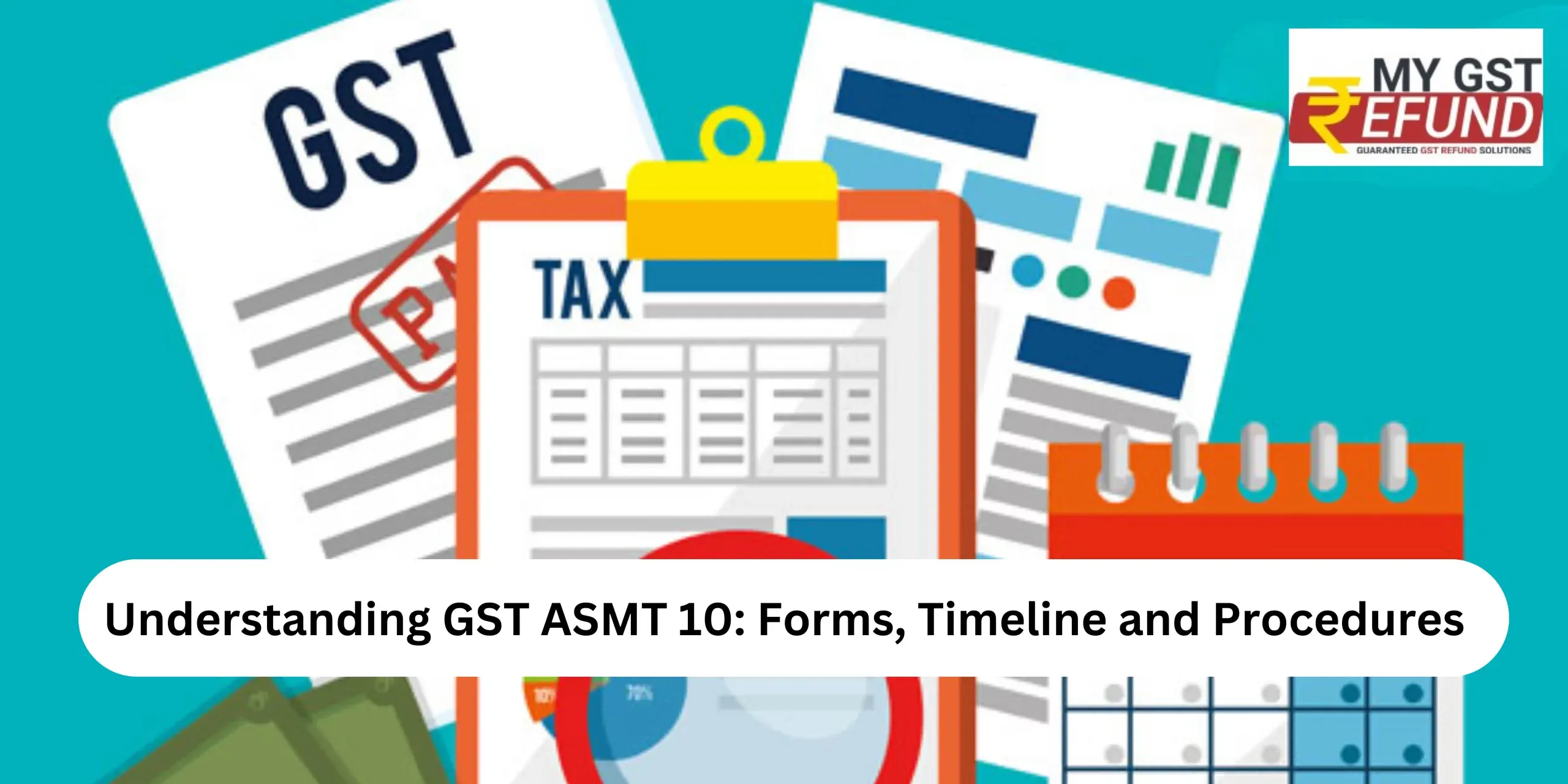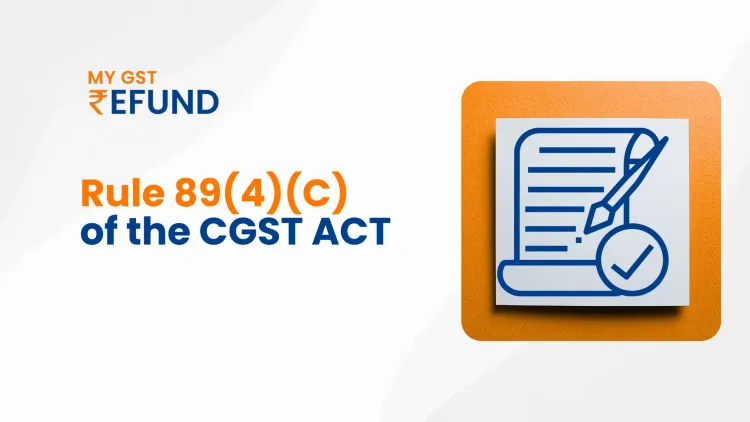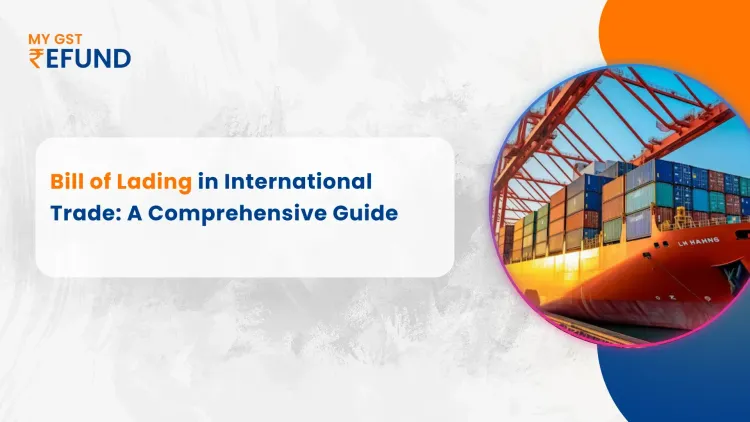Understanding GST ASMT 10: Forms, Timeline and Procedures
Published on: Fri Jul 14 2023
Introduction
To file the GST returns in accordance with the requirements of the GST law, a person must be registered for GST. However, there may be some circumstances in which you receive an ASMT-10 GST return inspection notice. It gives you access to a notice that the department has issued to verify the accuracy and completeness of your GST returns.
What is GST ASMT 10?
When the tax authorities discover inaccuracies or discrepancies in a registered taxpayer’s GST returns, they will send them a Goods and Services Tax ASMT-10 notification. This notice is used to alert the taxpayer to the differences and ask for explanation or error correction. A GST Officer has the ability to evaluate the returns based on specific risk parameters in accordance with Section 61 of the CGST Act, 2017, read with Rule 99 of the CGST Rules, 2017. If a disparity is discovered during the assessment, the proper officer must notify the taxpayer in Form GST ASMT-10.
If a disparity is discovered during the assessment, the proper officer must notify the taxpayer in Form GST ASMT-10. The proper officer must notify the taxpayer of the disparity in form Goods and Services Tax ASMT-10 and request an explanation for it within the time-frame indicated in the notice, which cannot be longer than 30 days. The notice can also include information on any tax, interest, or other amounts owing as a result of the difference.
Reasons for Issuing GST ASMT-10
When a proper officer discovers a discrepancy when reviewing a return, a GST ASMT-10 is issued. There is no example list of discrepancies where Goods and Services Tax ASMT-10 can be given in Section 61 of the CGST Act, 2017. The proper officer can therefore issue for any difference he notices.
The tax authorities may send a taxpayer a GST ASMT-10 notice for a number of reasons which include:
- Inconsistency between Input Tax Credit (ITC) reported on GSTR-2A/2B and GSTR-3B.
- Tax liability reported in GSTR-1 and GSTR-3B are inconsistent.
- Filing returns late or not at all.
- Discrepancy between the tax liability shown on GSTR-3B and the E-Way Bill.
- Purchase from a retailer whose GST registration has been suspended or canceled with retroactive effect.
- Purchases from sellers whose authenticity is under suspicion.
Contents of GST ASMT-10
- Basic details: GSTIN, name, address and tax period.
- Discrepancy Observed: Details of discrepancy if any and asking for an explanation.
- Particulars of the tax officer: DIN, name, signature and designation of the tax official issuing notice.
How to respond to notices issued in GST ASMT-10?
It is important to note that GST ASMT-10 is not a show-cause notice, it is a communication that merely lists the discrepancies found in GST Returns and the associated GST owed as a result of such non-compliance. Only at this point will the procedures end if such a notice is handled properly. But failure to comply with Goods and Services Tax ASMT-10 will result in the sending of a show-cause notice in Form GST DRC-01. As a result, taxpayers must file their responses carefully. A taxpayer should first comprehend the justifications behind the issuing of Goods and Services Tax ASMT-10 before submitting a response. The following are potential actions a taxpayer could take in response to anomalies noted in the GST return:
- Output Liability Differs between GSTR-1 and GSTR-3B
- More ITC was claimed in GSTR-3B than was found in GSTR-2B/GSTR-2A.
- Cancellation of a dealer purchase with retroactive effect or bogus or fake firm
How to file a reply to GST ASMT-10?
According to Section 61 of the CGST Act, the taxpayer must file a GST ASMT-11 reply in response to the ASMT-10 notice within the time frame indicated in the notice, which cannot be longer than 30 days.
There are two eventualities that might happen in this circumstance:
Acceptance of discrepancies: The measures listed below must be taken if the taxpayer accepts the differences listed in Goods and Services Tax ASMT-10.
- The GST ASMT-10 tax amount, plus interest and penalties, must be paid by the taxpayer.
- Form DRC-03 must be used for payment. The assessee must choose the proper section while making a payment.
- The amount due on GST DRC-03 may be paid in cash or through an ITC.
- The assessee must state on Form GST ASMT-11 that the amount specified in Goods and Services Tax ASMT-10 has been paid together with a copy of the GST DRC-03 receipt.
- The following types of payment are available to the taxpayer:
- File Form DRC to Pay Tax
- Provide GSTR1 with the invoice, debit note, updated invoice, and amended debit note.
- Pays tax while filing GSTR-3B
Dispute over differences: If the taxpayer disputes the inconsistencies listed in ASMT-10, the procedures listed below must be taken:
- In this situation, the taxpayer is required to provide a response in GST Form ASMT-11 outlining the details of the discrepancy.
- Assessee must submit a point-by-point response together with thorough working and supporting papers, including:
- Copy of Supplier/CA’s GST Return Certificate
- Copy of invoices, a lorry receipt, an electronic waybill, Bank Statement etc.
Procedure Post Filing Reply
Satisfactory Reply: If the Proper Officer finds the taxpayer’s response satisfactory, they will issue an order under GST ASMT-12 stating that the proceedings related to the taxpayer’s response have been discontinued.
Unsatisfactory Reply: The Proper Officer may intervene if the response is unacceptable.
- The following sections allow the tax officer to issue a Show Cause Notice in Form GST DRC-01:
- Section 65 refers to a tax authority audit.
- Special Audit is denoted by Section 66.
- Section 67 refers to surveys and inspections.
- According to Sections 73 and 74, tax liabilities must be calculated without any purpose to commit fraud, deliberate falsification, or suppression of facts, and must be attributable to non-payment, short payment, improper refund, or incorrect use of input tax credit.
FAQs
-
What is the time limit for asmt 10 in GST?
The time limit for responding to a GST ASMT-10 notice is typically mentioned in the notice itself and cannot exceed 30 days from the date of its issuance.
-
Is Asmt-10 a show cause notice?
No, GST ASMT-10 is not a show cause notice. It is a communication/notification issued by the tax authorities to inform the taxpayer about the discrepancies or inaccuracies found in their GST returns. ASMT-10 lists the differences and requests an explanation or correction.
Are you Looking for GST Refund Service? Mygstrefund.com offers GST refunds on business, exports, and many more if your GST application is rejected. Get in touch with us today.
Related Posts





